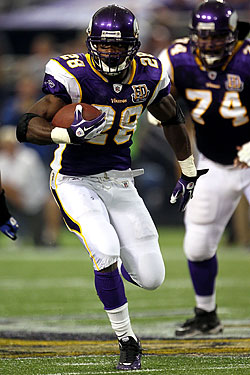
Strip away the emotion and the projection and the loyalties born of decades-ago games watched with Dad. Resist the temptation toward metaphor. Look at any professional sport after that flensing and you’ll see two things: a bunch of quick-reflexed dudes chasing a ball around, and a hugely lucrative business.
But of course, this isn’t what sports fans do when we watch a game or groan in a comments section. With all due respect to sports’ heady combination of virtuosity and violence, all that metaphor and all those loyalties are what make us care. And that dynamic applies, as the NFL has just shown us, even to the most bureaucratic off-the-field action. If the league’s recently concluded lockout proved anything—beyond the shortcomings of big-and-tall suit-makers and the unblushing avarice of the NFL’s owners—it’s that fans can do our metaphoric thing even on something as fundamentally unexciting as a labor negotiation. How else to explain the fact that the players’ victory in this 136-day staring contest was, in the end, maybe even more enjoyable than the thrill of watching Your Team of Choice gut out an emotional win?
While the NFL lockout lacked the simple good-versus-evil dynamics of, say, a Jets-Patriots game, it also wasn’t tough to pick a side. After years of record profits, NFL owners proposed that players accept an eighteen-game schedule—the equivalent of two weeks of brain-scrambling unpaid overtime—and take what amounted to an 18 percent pay cut. Unlike the NBA owners, who recently launched their own lockout, the NFL didn’t really try to argue that teams weren’t making money; instead, the argument was that teams weren’t as profitable as they could (and, ergo, should) be. The biggest obstacle being, as usual, those needy employees, a labor force that, in the NFL and the NBA, also happens to be the league’s very popular product.
The perceived right to an ever-fatter bottom line isn’t a new idea, but it’s not an old one, either. Depending on your perspective, the last two decades, and especially the past three years, have either created or justified a view of employees as a disposable component of a bigger profit-making machine, as something that can be managed “as a variable input,” in the words of a recent McKinsey Global Institute report. And so, amid a jobless recovery that comes amid record corporate cash stockpiles, the NFL’s genetic-lottery winners and their billionaire bosses somehow became outsize proxies for the strife in the non-jock workplace.
This was no mean feat: Despite what the endorsement departments would have us believe, it can be difficult to relate to professional athletes. The Vikings’ Adrian Peterson, for example, is a 220-pound multimillionaire who runs through other humans at speeds approaching twenty miles per hour; you almost certainly are not. But squeezed like workers everywhere (or close enough, anyway), the NFL’s superhumans suddenly looked surprisingly human, and their weird workplace became discomfitingly recognizable. There’s a lesson in all this for NBA owners as they prepare to negotiate their own labor apocalypse, but it’s a lesson that they, like their counterparts in the NFL’s mutant Chamber of Commerce, will probably have to learn the hard way. The recession has given fans a keen eye for management-suite absolutism, and it doesn’t play much better in a stadium than it does in a factory or corporate high-rise.
Have good intel? Send tips to intel@nymag.com.